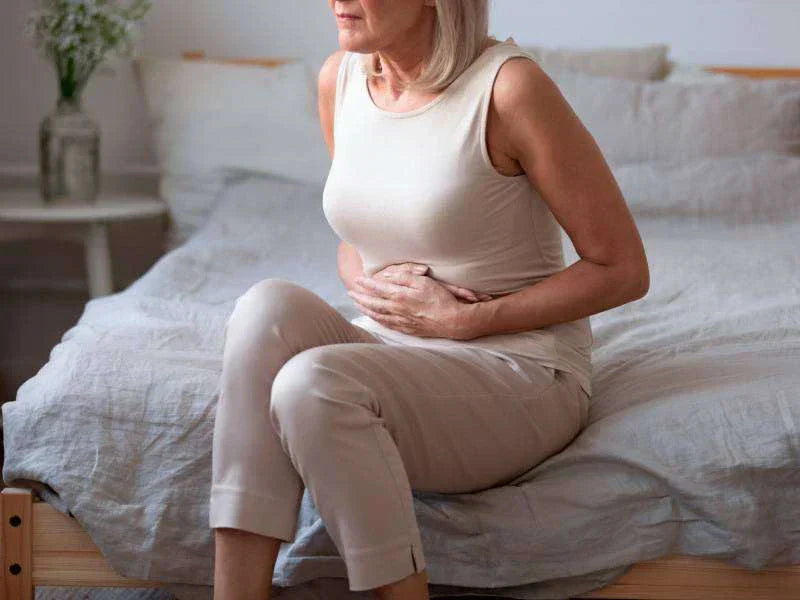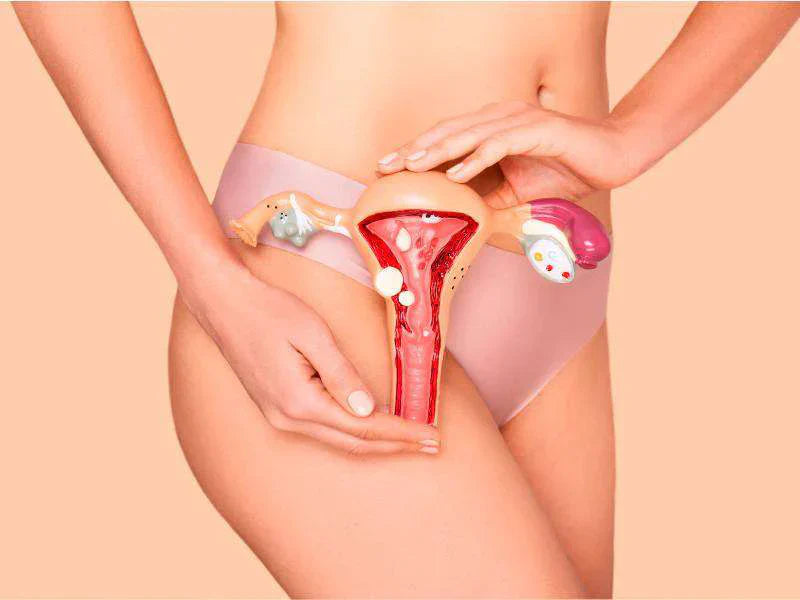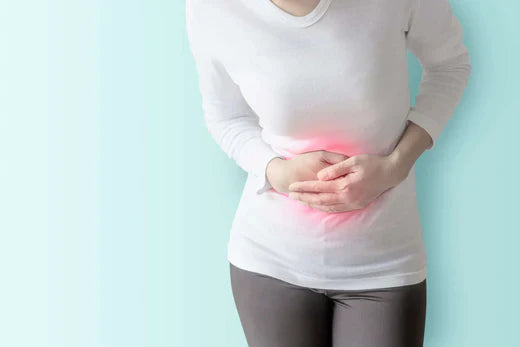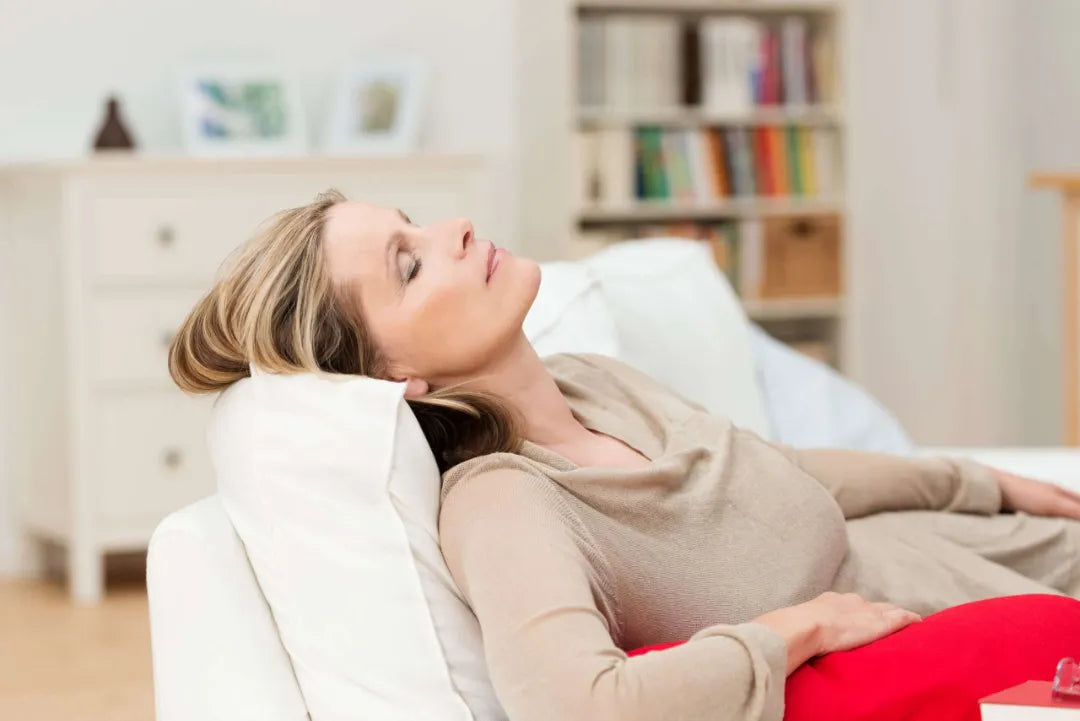The transition to menopause is a natural stage that occurs between 45 and 55 due to hormonal decline (1 ,2). During this process, oestrogen and progesterone production fall, and though many often discuss oestrogen, progesterone deficiency is a crucial factor. In fact, it explains symptoms like mood changes or irregular cycles, so understanding its role helps you tackle this change. This understanding is consequently essential for effectively improving your quality of life.
What physical signs is your body sending you?
This hormonal imbalance manifests in a variety of physical symptoms, and while hot flushes relate to oestrogen, low progesterone contributes (2). The most evident sign is the alteration of the menstrual cycle (3), featuring periods that shorten or lengthen. Furthermore, this change includes a menstrual flow that can vary drastically from noticeably light to notably abundant (5).
Additionally, it is common for headaches and migraines to appear or worsen, alongside persistent fatigue not improved by rest (2 ,4). Another revealing symptom is menopausal acne, which occurs because of a distinct hormonal mechanism involving androgens stimulating sebum production (6).
The emotional impact of progesterone deficiency

The emotional impact of progesterone deficiency is profound because it also extends directly to your long-term mental health. This particular hormone has a noteworthy calming effect, as it modulates the specific receptors that promote brain relaxation. However, when its natural levels begin to fall, this positive calming influence unfortunately diminishes over time. Consequently, you may experience a noticeable increase in anxiety, daily stress, and overall irritability (1 ,2).
Sleep is another area commonly affected during this time, often becoming much lighter and significantly less restorative than before. Furthermore, many women also report experiencing "brain fog", which includes having problems with memory and daily concentration (2, 3).
What causes progesterone deficiency?
The leading cause of this hormonal deficiency is intrinsically linked to the natural physiology of the menstrual cycle. During perimenopause, ovulation becomes erratic, and a cycle without ovulation unfortunately does not produce any progesterone (4,7). This specific situation then creates a relative oestrogen dominance, where oestrogen is not adequately counterbalanced by progesterone.
This lack of progesterone leads to irregular uterine bleeding and can also be a direct cause of infertility during this stage. It is also the primary reason premenstrual symptoms such as mood swings and bloating will often worsen (2, 5).
Long-term risks: beyond the symptoms
This hormonal deficiency carries significant long-term health risks, with osteoporosis being one of the most important to consider. This debilitating disease actively weakens the bones over time, which consequently makes them much more fragile and prone to breaking. Specifically, the drastic fall in oestrogen levels is known to accelerate the body's total loss of bone mass (8).
In this context, managing progesterone deficiency is indispensable for ensuring any hormonal treatment is entirely safe for the patient. Doctors add progesterone to Hormone Replacement Therapy (HRT) to protect the uterus, safely allowing oestrogen to exert its benefits (9, 10).
Some solutions for progesterone deficiency
To address progesterone deficiency and its related symptoms, Hormone Replacement Therapy (HRT) is considered the most effective available treatment. However, this decision must always be thoroughly discussed with a qualified healthcare professional before you proceed with it. The main therapeutic options that your doctor will discuss with you typically include the following (9):
-
Oestrogen-only: Indicated for women without a uterus.
-
Sequential combined: For women with a uterus, in perimenopause or the first postmenopause year.
-
Continuous combined HRT: For women with a uterus, over 12 months after the last period.
-
Micronised progesterone: This is "body-identical" progesterone. It has the same structure as the body's hormone.
Lifestyle changes that make a difference
Adopting healthy habits is a fundamental pillar for your overall well-being, especially during this challenging life transition. These vital lifestyle changes will act in constructive interaction with any medical treatment that your doctor may prescribe for you. Proper nutrition, for instance, which is rich in healthy fats, zinc, and vitamins, can help to optimise hormonal function. Likewise, effective stress management is critical because the stress hormone cortisol is known to interfere with progesterone (7).
Practices such as yoga, daily meditation, or Cognitive Behavioural Therapy (CBT) are all proven to be highly effective. Finally, regular exercise and good sleep hygiene are crucial for reducing stress, improving rest, and maintaining bone density (10).
When to seek professional medical help
You should seek medical help as soon as your symptoms begin to affect your overall quality of life negatively (3). For women over 45, the diagnosis is typically based on symptoms alone, without any need for blood analysis. Your personal experience of these symptoms is therefore the primary diagnostic tool that your doctor will use. Professional support is key for safe management, including periodic reviews to adjust the treatment to your needs (10).
Visit our website to discover how Issviva can help you understand and manage progesterone deficiency during menopause with our resources. We provide educational guides, trusted products, and a safe community that supports you at every single step.
References
-
NHS. Menopause [Internet]. NHS.UK; 2022 [cited 2024 May 21]. Available from: https://www.nhs.uk/conditions/menopause/
-
Newson L. Utrogestan (micronised progesterone) explained [Internet]. drlouisenewson.co.uk; 2024 [cited 2024 May 21]. Available from: https://www.drlouisenewson.co.uk/knowledge/utrogestan-micronised-progesterone-explained
-
NHS Inform. Signs and symptoms of menopause [Internet]. NHS Inform; 2024 [cited 2024 May 21]. Available from: https://www.nhsinform.scot/healthy-living/womens-health/later-years-around-50-years-and-over/menopause-and-post-menopause-health/signs-and-symptoms-of-menopause/
-
Thiyagarajan D, Basit H, Jeanmonod R. Physiology, Menstrual Cycle [Internet]. StatPearls Publishing; 2024 [cited 2024 May 21]. Available from: https://www.ncbi.nlm.nih.gov/books/NBK500020/
-
Wild S. Bleeding during perimenopause: What you need to know [Internet]. Bupa UK; 2023 [cited 2024 May 21]. Available from: https://www.bupa.co.uk/newsroom/ourviews/bleeding-during-perimenopause
-
Newson L. Acne, perimenopause and menopause [Internet]. drlouisenewson.co.uk; 2025 [cited 2024 May 21]. Available from: https://www.drlouisenewson.co.uk/knowledge/acne-perimenopause-and-menopause
-
Prior JC. Perimenopause: The complex endocrinology of the menopausal transition. Endocr Rev [Internet]. 1998 Aug [cited 2024 May 21];19(4):397-428. Available from: https://academic.oup.com/edrv/article/19/4/397/2530801
-
Royal Osteoporosis Society. Hormone replacement therapy (HRT) and bone health [Internet]. The Royal Osteoporosis Society; 2022 [cited 2024 May 21]. Available from: https://theros.org.uk/information-and-support/osteoporosis/treatment/hormone-replacement-therapy/
-
NHS. About hormone replacement therapy (HRT) [Internet]. NHS.UK; 2022 [cited 2024 May 21]. Available from: https://www.nhs.uk/medicines/hormone-replacement-therapy-hrt/about-hormone-replacement-therapy-hrt/
-
National Institute for Health and Care Excellence. Menopause: diagnosis and management (NG23) [Internet]. NICE; 2024 [cited 2024 May 21]. Available from: https://www.nice.org.uk/guidance/ng23
You May Also Like

JOIN US AND GET 10% OFF
Sign up to our newsletter to access free resources, advice and support.















